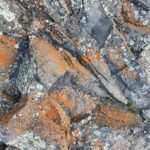The discovery of elements throughout history has played a pivotal role in the advancement of science and technology. One such element is tungsten, a metal known for its exceptional hardness and heat resistance. Tungsten is a critical component in various industrial applications, from light bulb filaments to aerospace engineering. But when was tungsten discovered? In this article, we delve into the fascinating history of tungsten’s discovery, examining its origins, the individuals responsible for its isolation, its nomenclature, and its subsequent contributions to science and industry.

The Origins of Tungsten
Tungsten, a chemical element with the atomic number 74, is known for its remarkable physical properties, such as high melting point and density. However, before its discovery and isolation, tungsten existed in nature primarily as tungstates in various minerals. The most common tungstate mineral is wolframite, which contains tungsten in the form of tungsten trioxide (WO3). Tungsten’s journey from its natural state to its elemental form is a story of scientific curiosity and ingenuity.
Early Encounters with Tungsten-Containing Minerals
Before tungsten’s isolation as a distinct element, there were several instances of explorers and scientists encountering minerals containing tungsten. In the early 18th century, various mineralogists and chemists observed that certain ores, like wolframite, exhibited unusual properties when smelted. These properties raised questions about the nature of the element responsible for these characteristics.
The Spanish Chemists Juan José and Fausto Elhuyar
The official discovery of tungsten is credited to two Spanish chemists and mineralogists, Juan José and Fausto Elhuyar. In 1783, these two brothers embarked on a journey that would lead to the isolation of tungsten. Their quest was to unlock the mysteries hidden within the mineral wolframite and reveal the existence of a previously unknown element.
Isolation of Tungsten
The Elhuyar brothers recognized the potential of wolframite in their pursuit. They decided to extract tungsten from the mineral, specifically its oxide (WO3). The key to this extraction was a reduction process involving charcoal.
- Charcoal Reduction Process
The Elhuyar brothers’ method involved heating the tungsten oxide, WO3, with charcoal in a furnace. This process facilitated the reduction of the oxide, leading to the isolation of metallic tungsten. This groundbreaking experiment marked the first successful isolation of tungsten, a significant milestone in the history of chemistry.
- Naming the Element
Following the successful isolation of tungsten, the Elhuyar brothers named the newly discovered element “wolfram” in honor of the mineral from which it was derived, wolframite. This name is still used in several countries, including Germany, where tungsten is referred to as “Wolfram.”
Early Applications of Tungsten
The discovery of tungsten had profound implications for various fields. Its remarkable properties, including high melting point and density, made it an attractive material for a range of applications.
- Light Bulb Filaments
One of the earliest industrial applications of tungsten was in the manufacture of incandescent light bulbs. The high melting point of tungsten allowed for the creation of filaments that could withstand the extreme heat generated by the bulb, resulting in longer-lasting and more efficient lighting.
- Electrical Contacts
Tungsten’s electrical conductivity and resistance to high temperatures made it an ideal choice for electrical contacts in switches and circuit breakers. Its use in these applications ensured reliability and safety in electrical systems.
- Aerospace and Defense
The aerospace and defense industries also benefited from tungsten’s properties. Tungsten alloys were employed in the construction of high-performance jet engines and armor-piercing munitions, highlighting its role in enhancing the capabilities of modern military technology.
Tungsten’s Impact on Modern Industry
Tungsten’s discovery and subsequent applications in various industries laid the foundation for modern manufacturing and technology. Let’s explore the continuing influence of tungsten in the 21st century.
- Electronics
The electronics industry heavily relies on tungsten, particularly in the production of semiconductors and integrated circuits. Tungsten thin films are used in the creation of microelectronic devices, ensuring precision and reliability.
- Aerospace and Aviation
Tungsten is still crucial in the aerospace sector, where it is used in high-temperature applications, such as rocket nozzles and turbine blades. Its strength and heat resistance make it a preferred material in these critical components.
- Medical and Healthcare
In the field of medicine, tungsten plays a significant role in X-ray tubes, where its high atomic number makes it an effective shielding material for blocking radiation. This application is essential for medical imaging and radiation therapy.
- Energy Sector
Tungsten is utilized in the energy sector for its contributions to clean energy technologies. Tungsten carbide, a compound of tungsten, is used in the manufacture of wind turbine blades and cutting tools for the machining of materials in nuclear power plants.
- Automotive Industry
Tungsten-based materials find applications in the automotive industry, especially in the production of heavy-duty components like ballasts, crankshaft counterweights, and piston rings. Tungsten’s high density allows for precise weight distribution and enhanced engine performance.
The Global Tungsten Market
Tungsten’s versatile applications have made it an integral part of modern industry, and as a result, the global tungsten market is significant. Let’s examine the state of the tungsten market and its future prospects.
- Production and Reserves
Tungsten is not evenly distributed worldwide, with significant deposits found in China, Russia, Canada, and other countries. The production of tungsten concentrates primarily on mining these ores and refining the metal.
- Market Trends
The demand for tungsten has been on the rise due to the expansion of industries such as electronics, automotive, and aerospace. With advancements in technology and a focus on sustainability, tungsten’s importance is likely to grow even further.
- Challenges and Environmental Concerns
Tungsten mining and production can have environmental impacts, including water pollution and habitat destruction. As a result, there is an increasing emphasis on sustainable and responsible tungsten mining practices.
- Future Prospects
The future of the tungsten market will be influenced by various factors, including technological advancements, geopolitical dynamics, and environmental regulations. The development of recycling methods for tungsten products is also gaining importance.
Conclusion
The discovery of tungsten, achieved by the Elhuyar brothers in 1783, marked a significant milestone in the history of chemistry and industry. Tungsten’s unique properties, such as its high melting point, density, and resilience, have made it an invaluable material for a wide range of applications. From its early use in light bulb filaments to its vital role in modern aerospace, electronics, and energy technologies, tungsten has revolutionized various industries. As we look to the future, the sustainable and responsible use of tungsten will be essential to ensure its continued contribution to science and industry while minimizing its environmental impact. Tungsten’s story is a testament to human curiosity, innovation, and the enduring impact of scientific discoveries on our world.





